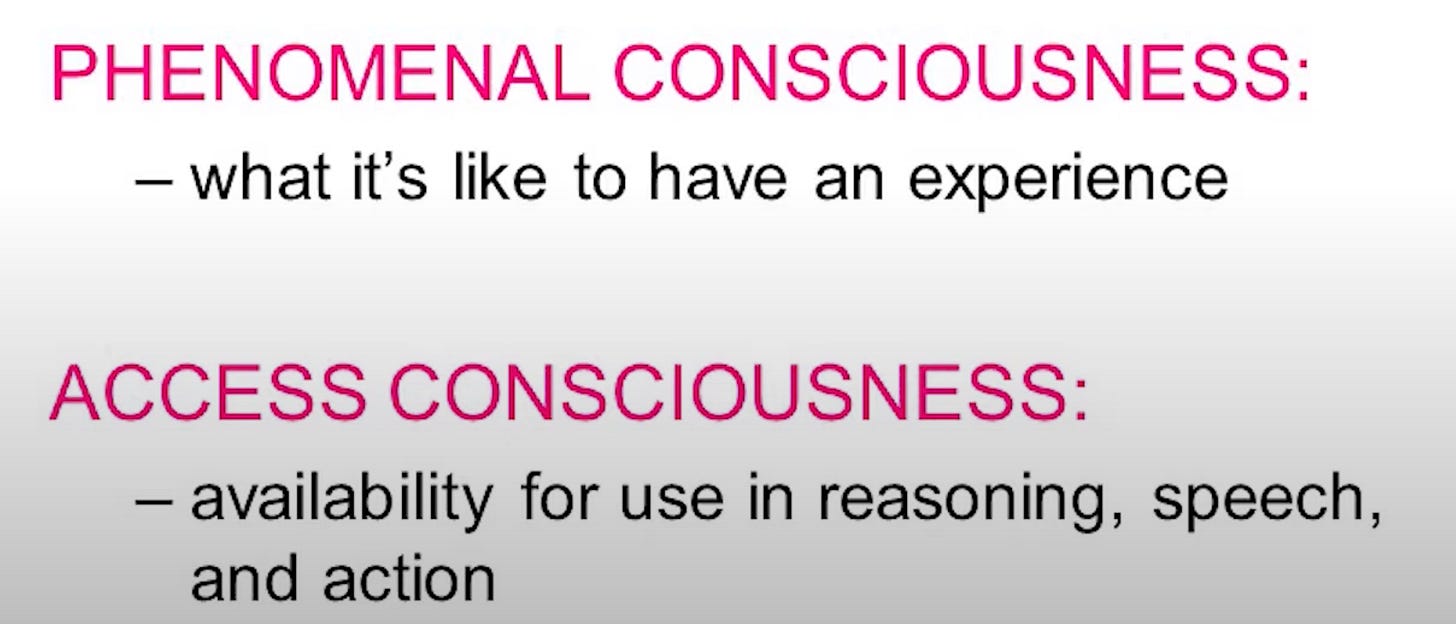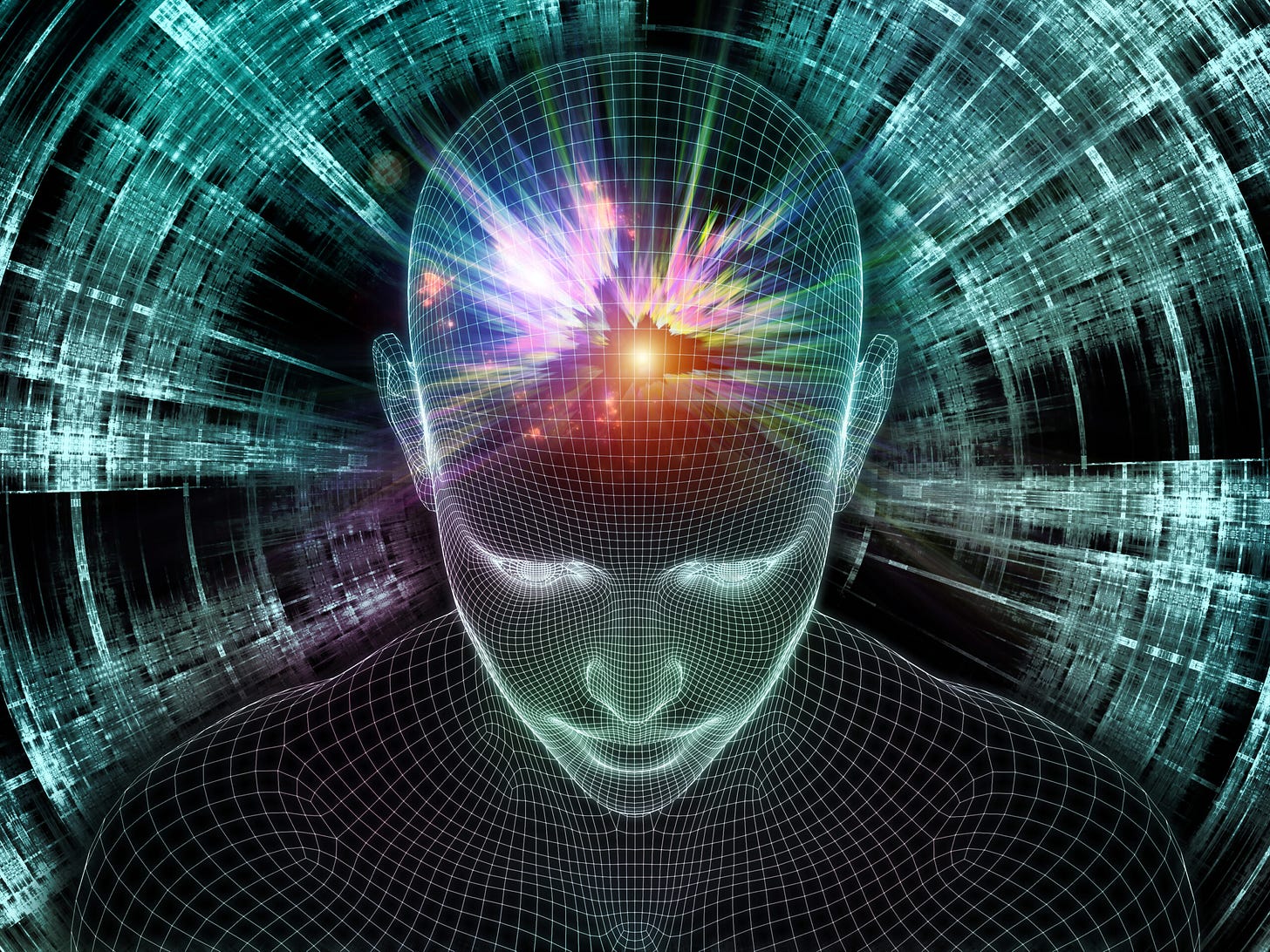3 Types of Consciousness As Your Internet Browser Tabs
Spotify, spreadsheets, and Instagram as windows into the (machine's) mind
There are some questions that I seemingly never tire of asking.
Among them: “Do you want to get frozen yogurt?” (regrettably, contra the guidance of Traditional Chinese Medicine).
And then, one that’s decidedly less about sugar and more about sentience: “When, if ever, will AI systems gain consciousness?”
But before meaningfully responding, we must ask something more foundational. What exactly do we mean by “consciousness?”
Everyone Has a Take
The term “consciousness” gets tossed about with impressive frequency across headlines, X threads, Substack essays (hi), and late-night debates.
Buzzword, certainly. But what even is consciousness? “No-one knows,” the BBC conceded recently.
To bring clarity to this kaleidoscopic discourse, let’s turn to something more familiar: your web browser.
I’ll define three types of consciousness, explaining them through a metaphor that you likely have open in front of you already.

What Consciousness Is NOT:
We shall start by sweeping aside a mythic framework popularized by René Descartes in the 17th century.
Consciousness (of any variety) is not a homunculus, or a person-like entity in your head perceiving everything you do through your eyes.

Among its other problems, this so-called “Cartesian Theater” poses a recursive question. Who is controlling the homunculus inside of the homunculus inside of the homunculus, ad infinitum? So let’s gently escort this idea to the closest exit.
Analogy Time: Three Types of Consciousness as Internet Browser Tabs
Now, I’ll lay forth three types of consciousness: phenomenal, access, and self — each corresponding to a distinct tab in your web browser.
(1) Phenomenal consciousness = Spotify/Youtube tab
Phenomenal consciousness is the “what it’s like” of your experience; the raw, subjective feeling of being you.
In cognitive science, this qualitative texture of experience is called qualia.
Qualia include the taste of chocolate, the blueness of the sky, or the pain of a stomachache.

The “hard problem” of consciousness asks how and why human qualia exist. And attributing every subjective experience to electrical activity in the brain doesn’t resolve the mystery.
For example: imagine a purple cow (really imagine it, please, and in detail!).
Events in your brain may be closely linked or give rise to that purple cow — but that neural activity in itself does not equal the purple cow. As philosopher Daniel Dennett argues: “the type and location of the neurons involved… the neurotransmitter chemicals released — none of those properties is the very property of the cow in your imagination.”
In our analogy, phenomenal consciousness is the domain of felt, personal experience — and your browser’s music tab (say, Youtube) mirrors exactly that. Consider the joy that swells with the bass in your favorite song, the nostalgia stirred by a few shimmering chords:
As with Marcel Proust and his madeleines, one sensory detail can crack open a vault of sentiments vast enough to fill seven volumes.
My intuition is that when most people talk about AI consciousness, phenomenal consciousness is what they have in mind.
(2) Access consciousness = the tab you’re actively working on
Access consciousness is effectively your attention. It enables you to focus on information and take action accordingly.
Right now, kindly shift your gaze to the upper-right corner of your screen. You just became access-conscious of that location. You might even decide to squint for detail.
Metaphor-wise, access consciousness is Excel, Outlook, or a piece of code open in your browser (consulting StackOverflow counts). Access consciousness governs what you can attend to, act on, and retrieve — the cognitive equivalent of this foregrounded tab.
(Importantly, access consciousness is not to be confused with the homonymous pseudoscientific movement of the ‘90s claiming to channel Rasputin’s spirit through points on the skull. Prithee don’t ask me the hows or the whys of that).

(3) Self-consciousness = social media tab
Self-consciousness is awareness of your self as a discrete being.
Since the 1970s, animals’ self-consciousness has been clinically gaged with the mirror test: if you place a visible mark on a cat’s body and situate her in front of a mirror, does she attempt to remove the mark — or does she assume she’s seeing another creature entirely?
The test is not without its issues. Vision acuity varies, as does interest in mirrors.
Further, some animals might notice the mark and opt to simply let it be (which, honestly, might be the most evolved response of all, as per several philosophical rubrics).

In our analogy, self-consciousness can be thought of as platforms like Instagram, LinkedIn, and Facebook. Here lies the version of you that exists as a finite agent with a history and defined limits: a name, a noun, a face cropped to fit a circle.
To Conclude, Are We Closing Tabs… or Opening Them?
I am of the belief that AI systems will eventually develop one or more forms of consciousness. But for now, any such claim demands precision: which type? And based on what evidence?
In 2020, philosopher Susan Schneider proposed some (I think genuinely fascinating) tests for machine consciousness. These include linguistic assessments — the same Q-and-A format as the famous Turing Test, which several LLMs apparently passed this spring.
Another of Schneider’s diagnostics involves experimentally testing the machine’s preference for future over past events. She argues that a non-conscious AI would have no future-bias, whereas a conscious system might exhibit our human tendency to care more about what lies ahead. And this forward-looking orientation maps most closely onto self-consciousness: awareness of one’s unique narrative arc and bounded situation in time.

These approaches don’t yield definitive answers, but could move us closer to the heart (which ancient Egyptians actually believed was the seat of intellect) of the issue.
So, the next time someone asserts that “AI is conscious” or emphatically dismisses the possibility altogether, try to identify which browser tab is in play. For instance, Anthropic AI welfare officer Kyle Fish recently estimated a 15% chance that AI chatbots are conscious. His nod to “experiences of [AI systems’] own” seemed to invoke the phenomenal flavor.
This conversation is still incipient — and by using clearer language, we can help shape its course well into the future. Til the (purple) cows come home.





